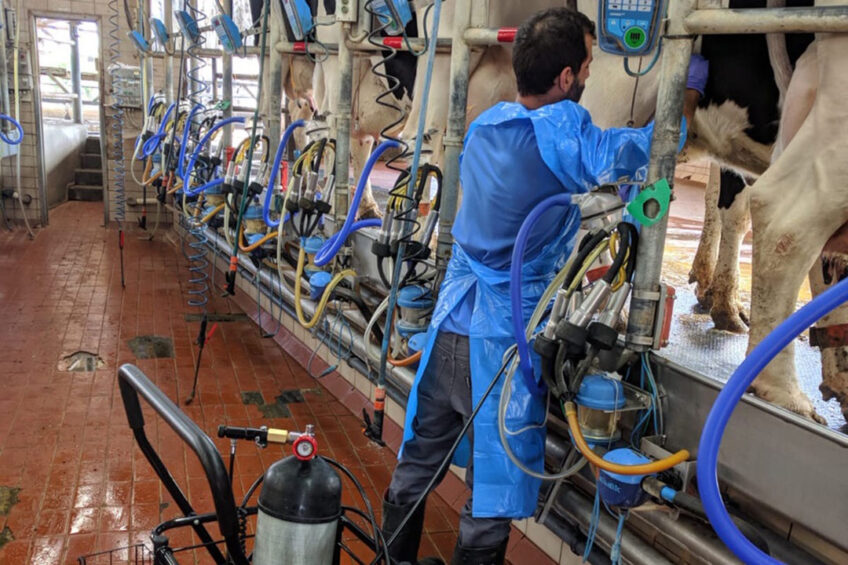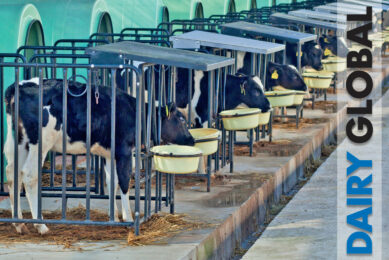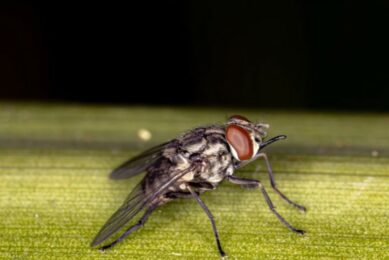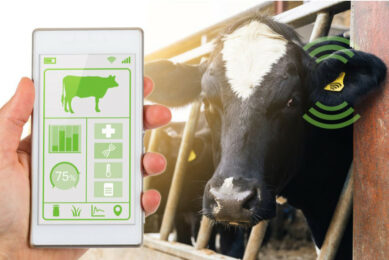New ‘cure’ to tackle mastitis

With such a great emphasis on reducing the use of antibiotics in livestock farming these days a number of new ‘cures’ for mastitis have been developed.
Mastitis costs the global dairy industry billions of dollars every year in lost production and is one of the biggest consumers of antibiotics, or at least it was. There are many solutions to reduce mastitis coming to the market that don’t use antibiotics and instead use natural remedies or new technology to control the disease.

Acoustic Pulse Technology to treat mastitis
One of these latest developments concentrates on the use of Acoustic Pulse Technology (APT) and its ability to treat inflammatory diseases in human healthcare. Based in Israel, Armenta has adapted this human care technology to increase the health of cattle by focusing on mastitis, which is also an inflammatory disease. Following a number of trials on dairy farms around the world, the company found its new test had a success rate for tackling mastitis of over 70%.
Armenta CEO and chairman Gil Hakim helped set up the company back in 2018 and is moving forward with the new treatment to help farmers. Hakim said: “The company was set up to address the most pressing disease affecting dairy farming today as losses due to bovine mastitis can reach several billion dollars per year around the world.
“Armenta developed a disruptive, proprietary, antibiotic free solution for bovine mastitis, based on APT designed specifically for dairy cattle.
“APT has been used for over 20 years in human healthcare treating inflammatory diseases. Our motto is from human care to cattle care,” he said.
APT has been in use for more than 20 years in orthopaedics… It has been shown to speed up recovery by producing new blood vessels, reducing inflammation and improving tissue functioning, alongside other long-term positive effects.” – Gil Hakim
Acoustic Pulse Therapy for cows
Armenta says that traditional, antimicrobial treatments for bovine mastitis are becoming more and more burdensome and that their results are unsatisfactory, they undermine farm profitability, and the human health risks are triggering global restrictions.
Armenta is changing the paradigm with Acoustic Pulse Therapy (APT). Widely used in the medical field for more than 20 years, non-invasive acoustic therapy triggers natural biological processes that fight infection and inflammation. Now, for the first time, this technology can be used to treat dairy cows quickly, easily, and cost-effectively. A unique, simple-to-use, lightweight and hand-held device, the APT-X, provides comprehensive mastitis treatment in just 3 minutes, with immediate results.

During the course of field studies on dairy farms around the world, farmers and veterinarians applied the appropriate Armenta course of therapy to hundreds of cows with clinical or subclinical mastitis.
The equipment was comfortable to use and performed well, the treatments were simple to administer, and the animals displayed no resistance.
Milk yield and cure rate
The company says the real impact was on the cattle’s health and milk production which after treatment showed a mastitis recovery rate of over 70% with normal SCC levels and infection-free.
Also, there was around 10% more milk produced daily using the APT-X than without treatment. These improvements in productivity and animal welfare meant an 80% reduction in culling rates, and a measurable and rapid improvement in farm profitability.

Hakim added, “We have already tested the technology on over 850 cows in over 40 farms in France, the Netherlands, Italy, Ireland, Germany, United States, Argentina and Israel.
“We were able to show over 70% cure rates and over 10% increase in milk yield and without any drugs, in a non-invasive, simple and without side effects technology.”
Future goal of the company is to transform herd health management,” – Gil Hakim
How APT works
The current APT-X system consists of a pulse generator (APT-X1) which is a hand-held device that generates the acoustic pulses through ballistic impact. It also contains an applicator unit (AM-1) which is disposable and needs to be replaced every 20 to 80 cows.
And of course there is the control unit, high-pressure air tank, air compressor and accessories. The design of Armenta’s APT solution means it uses pulses that are generated via ballistic impact powered by high pressurised air covering a large area at therapeutic levels and all that in a short treatment time.
Also read: Treating mastitis without using antibiotics
Hakim added: “APT has been in use for more than 20 years in orthopaedics, physiotherapy, sports medicine, urology, and veterinary medicine. It has been shown to speed up recovery by producing new blood vessels, reducing inflammation and improving tissue functioning, alongside other long-term positive effects.
“Currently antibiotics are used as a treatment of mastitis during the lactation period and as a prevention method during the dry-period, the period between lactations.
“Using APT, the farmer could reduce the use of antibiotics as a treatment tool and abolish its use as a prevention.
“In field studies involving more than 850 dairy cows in 9 different countries, Armenta’s APT-based solution was used to treat clinical and subclinical mastitis, with unmistakable results.
“These showed over 70% recovery rates (normalised SCC and infection-free) and an increased milk yield of around 10% or more. These numbers were remarkably consistent with the academic paper by Prof Gabriel Leitner on APT use for treating bovine mastitis published in 2017,” he said.
Armenta and its developments are supported by a number of investors including farmers.
“The lead investor of the company is an Israeli Agritech Venture Capital. Other investors include dairy farms and dairy industry experts that have seen the company technology, how it works, and who understand it’s high potential and decided to invest. I personally invested in the company as well, together with several high-net worth individuals,” he said.
Also read: Image labelling to detect mastitis in cows
The future
Gil Hakim says the future goal of the company is to transform herd health management.
“Implementing APT in every dairy farm will allow cost effective herd health management, with a focus on lifting the economic burden of inflammatory diseases on profit,” he said.
“Bovine mastitis, an inflammation of the mammary gland, lowers milk production and milk quality and can lead to forced culling. Existing state of the art solutions are either treating mastitis by a variety of drugs and biological treatments or by targeted actions to prevent the disease occurrence.
“Both approaches show clear shortcomings and do not overcome the main problem which is regaining the udder health and function.
“APT has been therefore developed as a novel non-antibiotic-based device providing biological boost to the cow’s immune system, increasing its overall health and welfare and transforming the standard care of dairy cattle diseases,” he stated.
Join 13,000+ subscribers
Subscribe to our newsletter to stay updated about all the need-to-know content in the dairy sector, two times a week.










